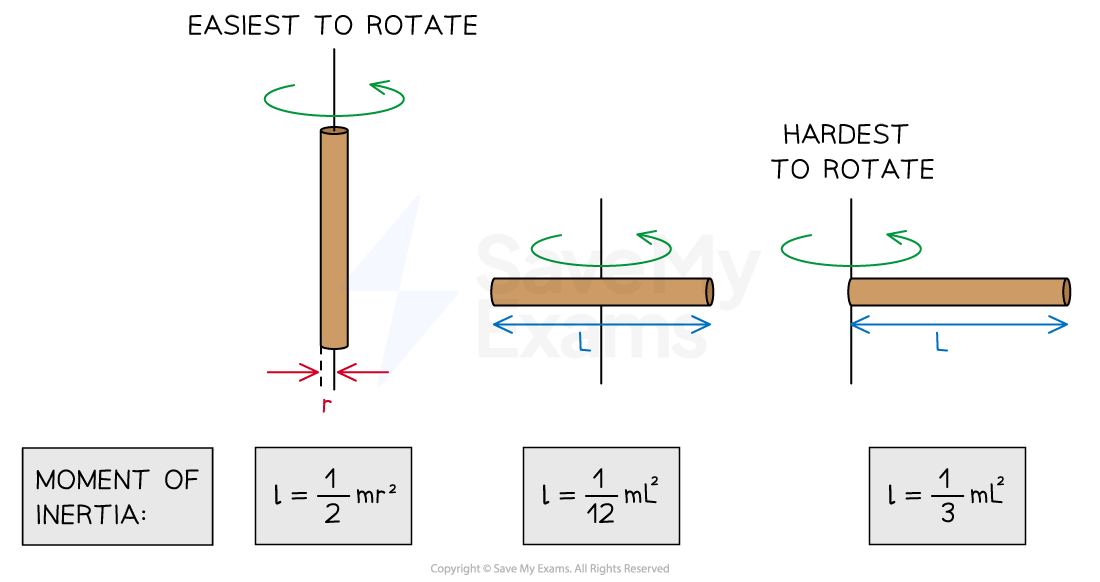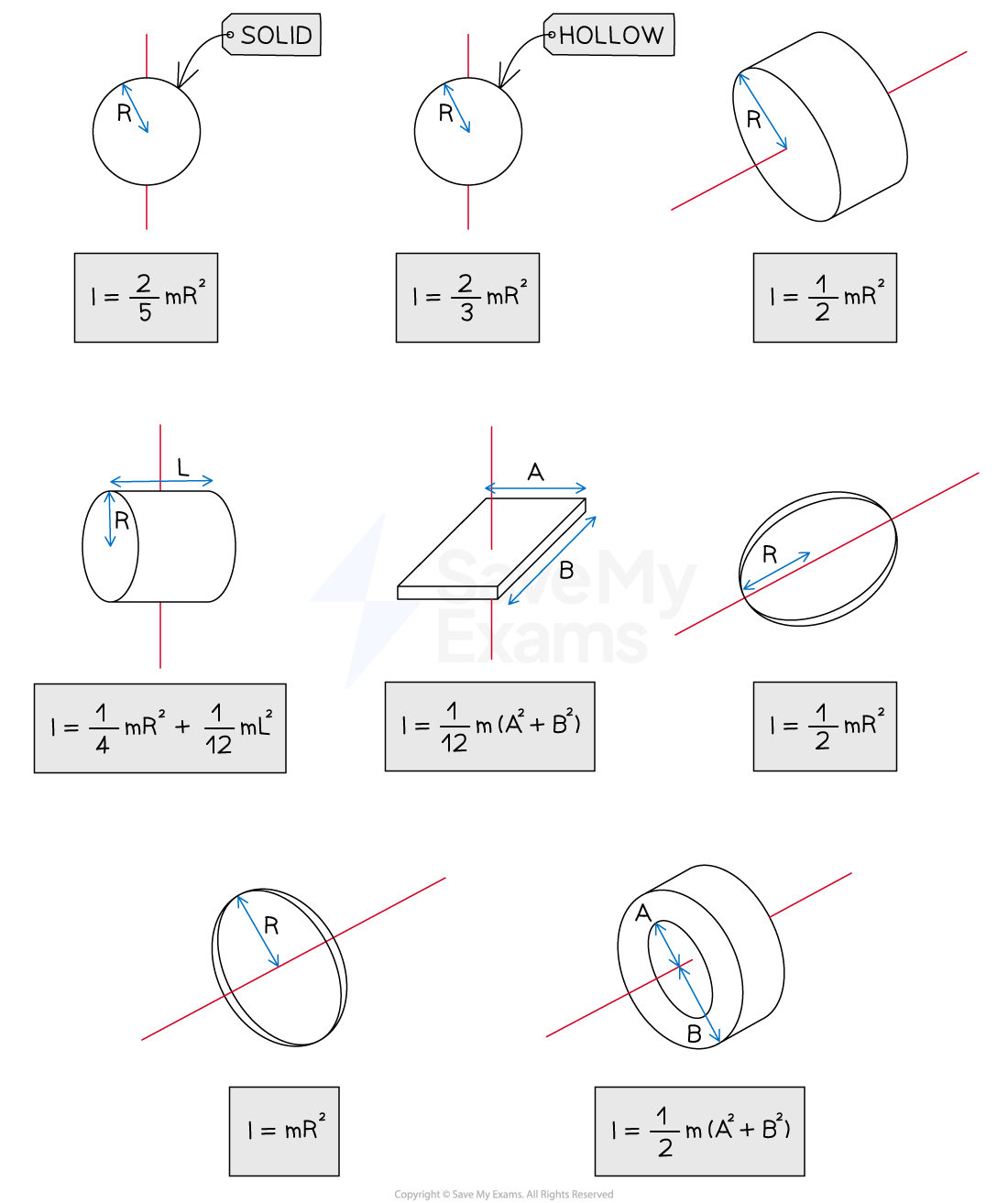Moment of Inertia (DP IB Physics) : Revision Note
Moment of Inertia
In linear motion, the resistance to a change of motion, i.e. linear acceleration, is known as inertia
The larger the mass an object has, the greater its inertia
In rotational motion, the distribution of mass around an axis must be considered, using moments of inertia
The moment of inertia of a rigid, extended body is defined as:
The resistance to a change of rotational motion, depending on the distribution of mass around a chosen axis of rotation
Moment of inertia is measured in kg m2
The moment of inertia of a body corresponds to how 'easy' or 'hard' it is to rotate, and this is dependent on many factors, including
its shape
its density
its orientation (relative to an axis of rotation)
These factors allow an object's distribution of mass to be taken into account
It also means that the moment of inertia of a singular object can change depending on its orientation in relation to the chosen axis of rotation
For example, the moment of inertia of a thin rod is different for each of the following orientations:
Rotation about its vertical axis
Rotation about its centre of mass
Rotation about one end

The moment of inertia of a body can change depending on its orientation relative to the axis of rotation
These are just a few of the possible orientations of the axis of rotation for a thin rod
There is an infinite range of possible axes, and therefore moments of inertia
This also applies to nearly all rigid, extended objects that could be considered
Examiner Tips and Tricks
Make sure you are clear on the distinction between linear motion and rotational motion here. The implications of considering the distribution of masses in relation to an axis of rotation, as opposed to considering them as uniform, have important consequences when carrying out calculations
Calculating Moments of Inertia
The moment of inertia
of a point mass is equal to
Where:
= moment of inertia (kg m2)
m = mass of the object (kg)
r = distance from its axis of rotation (m)
The total moment of inertia of a system can be calculated using:
This means that the sum of the moments of inertia of all the point masses in the system gives the total moment of inertia of the system
Some moments of inertia of common shapes are shown below:

Moments of inertia of common shapes, where R represents radius and L represents length, as shown
Worked Example
Two solid spheres form a dumbbell when attached to each end of a thin rod. The dumbbell rotates with the centre of mass of each sphere at a distance of 22 cm from the axis of rotation, as shown in the diagram.
The thin rod has a mass of 150 g. Each sphere has a radius of 4 cm and a moment of inertia of 0.04 kg m2 relative to the axis of rotation.

The moment of inertia of a thin rod about its centre is .
(a) Calculate the total moment of inertia of the dumbbell arrangement.
(b) Determine the proportion of the moment of inertia that the thin rod contributes to the dumbbell arrangement.
Answer:
Part (a)
Step 1: Calculate the moment of inertia of the rod
The mass of the rod is
The length of the rod is
Step 2: Calculate the overall moment of inertia of the system
The overall moment of inertia of the dumbbell is the sum of all the moments of inertia in the arrangement
Where
Part (b)
The proportion of the moment of inertia contributed by the thin rod is:
This means the rod contributes about 2% to the overall moment of inertia of the dumbbell
Examiner Tips and Tricks
You will never be expected to memorise the moments of inertia of different shapes, they will always be given in an exam question where required

You've read 0 of your 5 free revision notes this week
Sign up now. It’s free!
Did this page help you?
